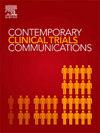根据已发表的Kaplan-Meier曲线重建患者水平的生存数据
IF 1.4
Q4 MEDICINE, RESEARCH & EXPERIMENTAL
引用次数: 0
摘要
个人水平的患者数据(IPD)有助于设计临床试验,进行荟萃分析或方法学研究。然而,这种患者水平的数据并不容易获得。利用已发表的Kaplan-Meier (KM)生存曲线重建生存数据的方法多种多样。目前还没有关于最佳方法的实际指导,也没有对该方法的性能进行广泛的评估。方法综述了几种提取KM生存曲线坐标和重建个体生存数据的方法。然后,我们复制了46条已发表的KM曲线的数据。重建数据的准确性通过将重建数据估计的风险比(hr)及其置信区间(ci)与原始论文中报道的数据进行比较来量化。结果复制的hr和ci与原始hr和ci具有高度的相似性。在大多数情况下,差异小于5%。58例重建hr的平均绝对百分比和中位数绝对百分比差异分别为2.85%和2.14%。这些结果表明重建方法可靠地重建了KM生存曲线的生存数据。基于大量的重建,我们证明了重建数据提供了与已发表论文相似的总体估计。再现数据的质量取决于已发表曲线中是否存在噪声以及预处理步骤是否做得适当。本文章由计算机程序翻译,如有差异,请以英文原文为准。
Reconstructing patient level survival data from published Kaplan-Meier curves
Introduction
Individual-level patient data (IPD) are helpful for designing clinical trials, conducting meta-analyses, or methodology research. However, such patient level data are not readily available. Multiple methods have been developed for reconstructing survival data using published Kaplan-Meier (KM) survival curves. There has been no practical guidance on an optimal approach or extensive evaluation of the performance of the approach.
Methods
We reviewed several methods of extracting the coordinates of KM survival curves and reconstructing individual-level survival data. Then, we reproduced data from 46 published KM curves. The accuracy of reconstructed data is quantified by comparing hazard ratios (HRs) and their confidence intervals (CIs) estimated from the reproduced data with those reported in the original papers.
Results
The comparison showed a high degree of similarity between the reproduced and original HRs and CIs. In most cases, the differences were less than 5 %. The mean and median absolute percentage differences of 58 reconstructed HRs were 2.85 % and 2.14 %, respectively. These results suggest the reconstruction method reliably reconstructs survival data from KM survival curves.
Conclusions
Based on an extensive number of reconstructions, we demonstrated that reconstructed data provided similar estimates overall to those from published papers. The quality of the reproduced data depends on the presence of noise in the published curves and whether the preprocessing step is properly done.
求助全文
通过发布文献求助,成功后即可免费获取论文全文。
去求助
来源期刊

Contemporary Clinical Trials Communications
Pharmacology, Toxicology and Pharmaceutics-Pharmacology
CiteScore
2.70
自引率
6.70%
发文量
146
审稿时长
20 weeks
期刊介绍:
Contemporary Clinical Trials Communications is an international peer reviewed open access journal that publishes articles pertaining to all aspects of clinical trials, including, but not limited to, design, conduct, analysis, regulation and ethics. Manuscripts submitted should appeal to a readership drawn from a wide range of disciplines including medicine, life science, pharmaceutical science, biostatistics, epidemiology, computer science, management science, behavioral science, and bioethics. Contemporary Clinical Trials Communications is unique in that it is outside the confines of disease specifications, and it strives to increase the transparency of medical research and reduce publication bias by publishing scientifically valid original research findings irrespective of their perceived importance, significance or impact. Both randomized and non-randomized trials are within the scope of the Journal. Some common topics include trial design rationale and methods, operational methodologies and challenges, and positive and negative trial results. In addition to original research, the Journal also welcomes other types of communications including, but are not limited to, methodology reviews, perspectives and discussions. Through timely dissemination of advances in clinical trials, the goal of Contemporary Clinical Trials Communications is to serve as a platform to enhance the communication and collaboration within the global clinical trials community that ultimately advances this field of research for the benefit of patients.
 求助内容:
求助内容: 应助结果提醒方式:
应助结果提醒方式:


